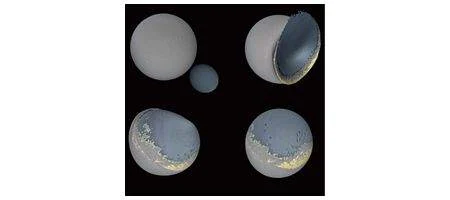The Earth once had two moons circling in the same orbit, say scientists, until a collision between the two created the moon we see today.

The big crash could explain why the moon is so lopsided, and more mountainous on its far side, say planetary scientists at the University of California, Santa Cruz.
This has always been a puzzle. The moon’s near side is relatively low and flat, while the topography of the far side is high and mountainous, with a much thicker crust.
It had already been surmised that our moon was created through a collision with a Mars-sized object, ejecting debris that coalesced to form the moon.
But the new study suggests that the impact also created another, smaller body, which eventually fell back onto the moon and coated one side with an extra layer of solid crust tens of kilometers thick.
“Our model works well with models of the moon-forming giant impact, which predict there should be massive debris left in orbit about the Earth, besides the moon itself. It agrees with what is known about the dynamical stability of such a system, the timing of the cooling of the moon, and the ages of lunar rocks,” says Erik Asphaug, professor of Earth and planetary sciences.
Asphaug’s team used computer simulations of an impact between the moon and a smaller companion (about one-thirtieth the mass of the moon) to study the dynamics of the collision and track the evolution and distribution of lunar material in its aftermath.
They found that in such a low-velocity collision, the impact wouldn’t form a crater or cause much melting. Instead, most of the colliding material would be piled onto the impacted hemisphere as a thick new layer of solid crust.
“The collision could have happened anywhere on the moon,” says postdoctoral researcher Martin Jutzi. “The final body is lopsided and would reorient so that one side faces Earth.”
Other models have been proposed to explain the formation of the highlands, including the suggestion that tidal forces were responsible. More data should help establish which, if either, is correct.






